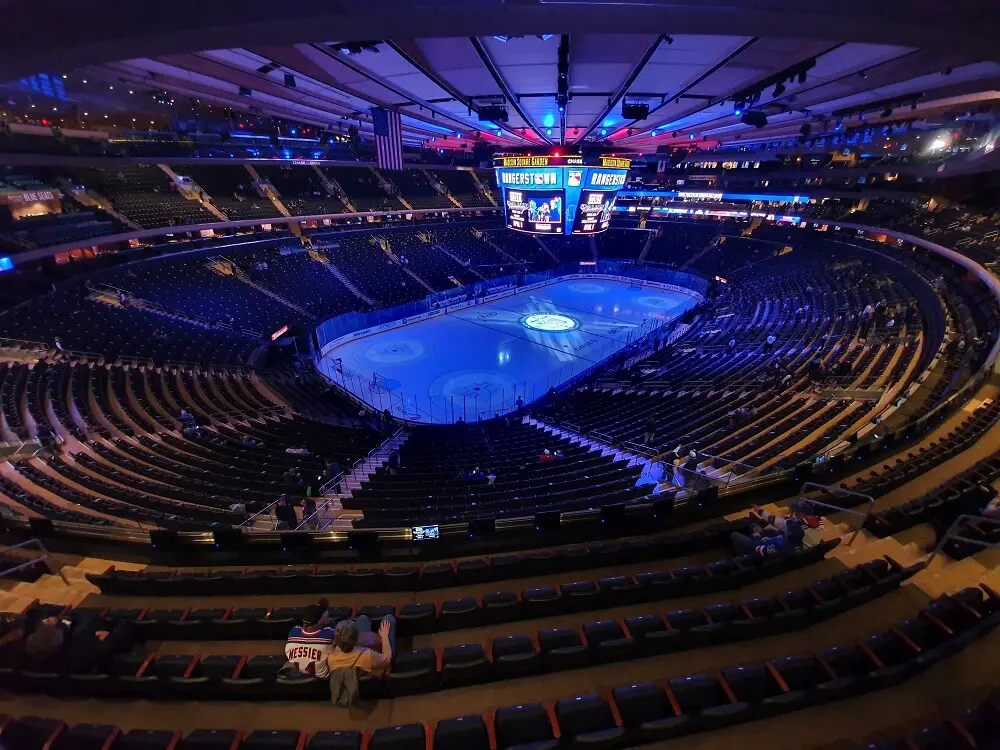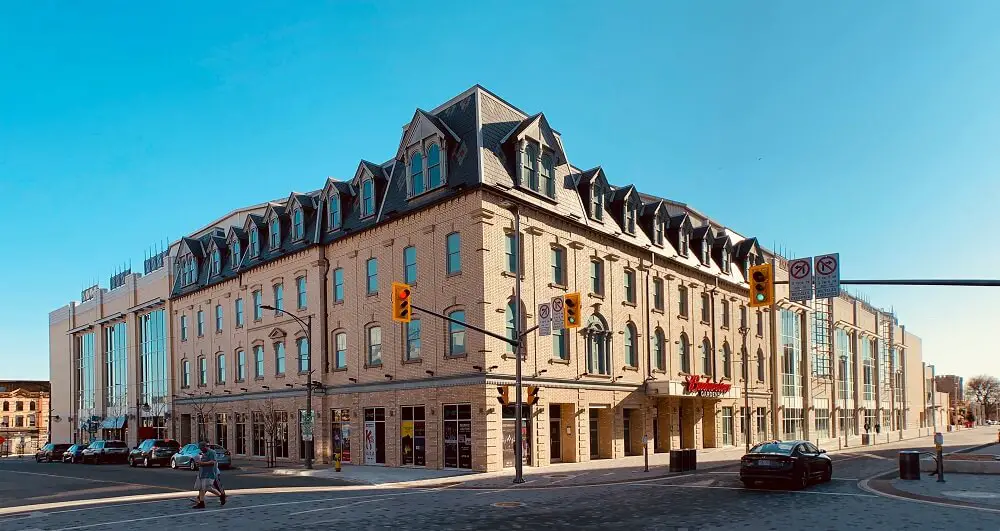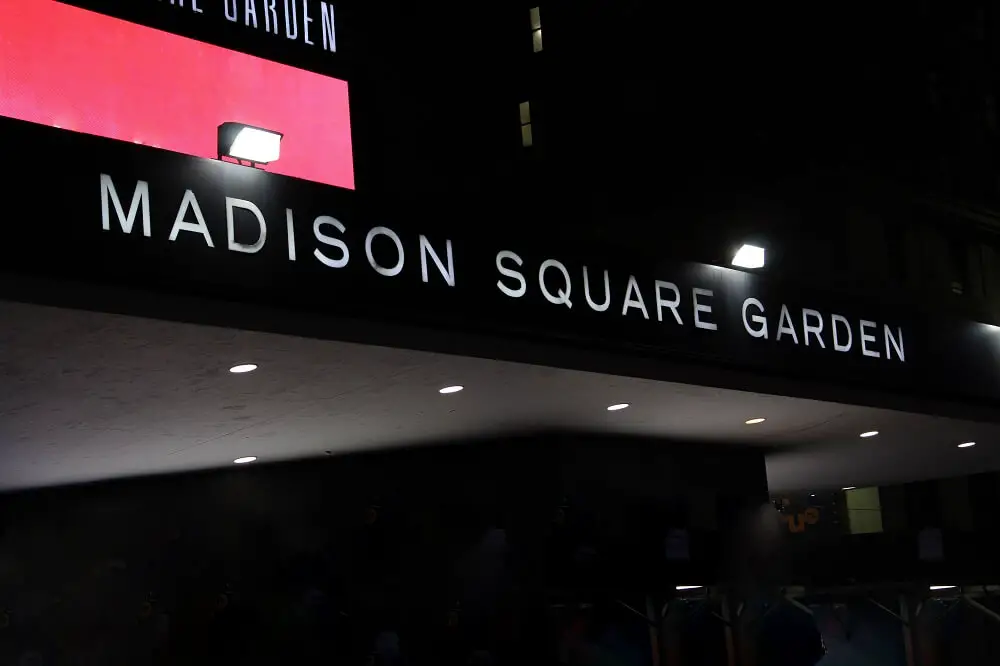When it comes to world class entertainment venues, nothing comes close to Madison Square Garden. Located in the heart of New York City, the famous arena has hosted a vast array of significant events, from illustrious concerts and performances to high-profile sporting fixtures.
But there is one curious element to the venue that, over the years, has left many visitors scratching their head. That is, why is Madison Square Garden Called a ‘Garden’ when it has no similar physical characteristics to a garden?
To answer, let’s summarise the reasons behind the naming:
The reason why Madison Square Garden is called a garden is due to the actions of a previous leaseholder, Patrick Gilmore. It was Gilmore that, after taking over the lease to the original MSG in 1876, changed its name from the Great Roman Hippodrome to Gilmore’s Garden. When Gilmore lost the lease three years later, the arena kept the ‘Garden’ name, but altered the first part of its title to Madison Square, which was the area in which it stood.
Now we know the short answer, let’s look into the issue in more detail.
Explore our related articles:
How Many People Can Fit Inside a Football Stadium?What is the Difference between a Stadium and Arena?
Top 10+ Construction Projects in Manchester (2023)
30+ Biggest Indoor Stadiums & Arenas in the World
Top 20+ Oldest Stadiums Still in Use Today
What will Qatar do with the 2022 World Cup Stadiums?
How did Madison Square Garden get its name?
The famous venue Madison Square Garden gets its name chiefly from its 19th Century history. Before the current arena existed, the area it resides in was known as Madison Square, located by the intersection of 5th Avenue and Broadway at 23rd Street in Manhattan. This square was named after James Madison, who was the fourth President of the United States.
Close to this square stood the first iteration of Madison Square Garden, which was called The Great Roman Hippodrome. In 1876, leaseholder Patrick Gilmore took charge of the building and changed the name of the arena to Gilmore’s Garden, which is where the current ‘Garden’ name first appeared.
Three years later, in 1879, the arena was purchased by William Vanderbilt, who added ‘Madison Square’ to the name, referring to the location of the arena. The term ‘garden’ in this context was a relatively fresh anachronism at that time, but it quickly caught on and pleased New Yorkers.
So, combined, the new name of the arena now read ‘Madison Square Garden’. And it’s this moniker that has remained to this day, becoming one of the most recognisable names in all of entertainment.
Throughout its multiple incarnations, the structure has been a significant venue for various events, performances, and public gatherings. Its unusual association with the name ‘garden’ has undoubtedly helped lend it a certain mystique and glamour over its lifetime.
But, while we now know why Madison Square Garden in particular is called a garden, that doesn’t explain why there are other venues which share the name. With this in mind, let’s explore why some other structures are called ‘gardens’.
Why are some sports arenas called ‘Gardens’?
Put simply, arenas that are called ‘gardens’ are usually named as such because of the influence of Madison Square Garden. The prominence of the New York venue and its position as host for the city’s biggest live events meant that other venues were inspired to name their own buildings in a similar style.
However, it may have also had something to do with the classical meaning of the word ‘garden’. The Latin word ‘geard’, meaning ‘open space’, served as the basis for both ‘garden’ and ‘yard’ in English, and in the classical use of the term, it referred to a sizable public location used for gatherings and events.
Therefore, calling a large arena with a high ceiling a ‘garden’ makes sense in this context, even if it may not have been the initial intention of the naming.
So, the practice of naming sports venues ‘Garden’ originated with the first incarnation of Madison Square Garden in New York City. Subsequent venues adopted the name, and while the classical origin of the term ‘garden’ may not have been the primary consideration, it aligns with the concept of a large open space used for public gatherings.
With this in mind, which are the venues that adopted the ‘garden’ label following the Madison Square Garden in New York?

Which other sports venues and arenas are called ‘Gardens’?
Although arenas that are named ‘gardens’ are relatively few and far between, there are some notable examples. These are predominantly located throughout the USA and Canada, and include:
TD Gardens
When the city of Boston in Massachusetts, USA, were faced with the prospect of naming their own arena, they had an obvious choice. The architects working on the arena were the same ones that designed the third version of New York’s Madison Square Garden.
As such, the city followed suit in honouring New York’s grand arena by naming its own arena ‘Boston Madison Square Garden’. However, since Boston lacked both a Madison Square and a square itself, the venue quickly became known simply as ‘Boston Garden’.
And, similar to the tradition in New York, despite having no similar physical traits to a garden, the term has stuck. Although the original Boston Garden was replaced in 1995, its replacement, TD Garden, also bears the ‘garden’ name.
Maple Leaf Gardens
Maple Leaf Gardens, a legendary sports arena and iconic symbol of Toronto’s sporting history, once served as the beloved home of the Toronto Maple Leafs. The team had been thrilling fans at the Arena Gardens on Mutual Street since its construction in 1912, providing an intimate space that accommodated around 7,500 spectators for hockey games.
As the years passed and the team’s popularity soared, the ambitious managing director of the Leafs, Conn Smythe, set his sights on creating a grander and more impressive venue. In 1930, he ultimately settled on a prime site at the intersection of Carlton and Church Streets, paving the way for Arena Gardens to be replaced.
The new arena retained the ‘Gardens’ element seen with its previous iteration, something which remains to this day. However, ice hockey is no longer played at Maple Leaf Gardens, as the Toronto Maple Leafs bid farewell to their cherished home in 1999, moving to the Air Canada Centre (now Scotiabank Arena).
Budweiser Gardens
Another venue that shares the ‘garden’ name is Budweiser Gardens, a magnificent sports and entertainment centre in London, Ontario. This arena is the home of ice hockey team the London Knights, replacing the London Ice House.
It initially bore the name ‘John Labatt Centre,’ paying homage to the Labatt Brewing Company, which boasted a production plant in London. This name remained its identity until 2012 when the 10-year naming rights agreement with the Labatt Brewing Company came to an end.
As per the agreement, the company held exclusive first rights on a subsequent deal, giving them the option to rebrand the arena if they saw fit. Seizing the opportunity to promote the main brand of their sister corporation, Anheuser-Busch, the Labatt Brewing Company decided on a fresh identity for the venue, and thus ‘Budweiser Gardens’ was born.
The new naming rights agreement, which began in 2012, amounted to $6.4 million for a decade, continuing the tradition of associating the arena with a renowned beverage brand.

Demolished Venues and Stadiums
There are some other arenas that have carried the ‘Garden’ name in tribute to Madison Square Garden, but have since been lost.
Other arenas that once held the ‘Gardens’ name but have since been demolished include Edmonton Gardens and Cincinnati Gardens. Both hosted top level ice hockey, but were deemed surplus to requirements when more modern arenas came into existence in the late 20th Century.
There have also been many stadiums that have held the ‘Gardens’ name, which include Eden Gardens in Kolkata, India, Franklin’s Gardens in Northampton, England, and Sophia Gardens in Cardiff, Wales. However, due to the fact that these are large outdoor venues, the usage of the word ‘Gardens’ here is more closely linked to the gardens that once stood in their place.
That’s all for our handy guide to why Madison Square Garden is called a garden. We hope it allows you to see the famous old venue in a whole new light.
If you’d like to know more about why some stadium-related terms are named the way they are, check out our guide to why stands are called stands. It forms part of our wider stadiums and sports arenas collection.
Or, if you would like to check out more definitions and vocabulary explanations from the construction and architecture world, why not explore our selection of Building Wikis?
Last Updated on 27 July 2023 by Michael
